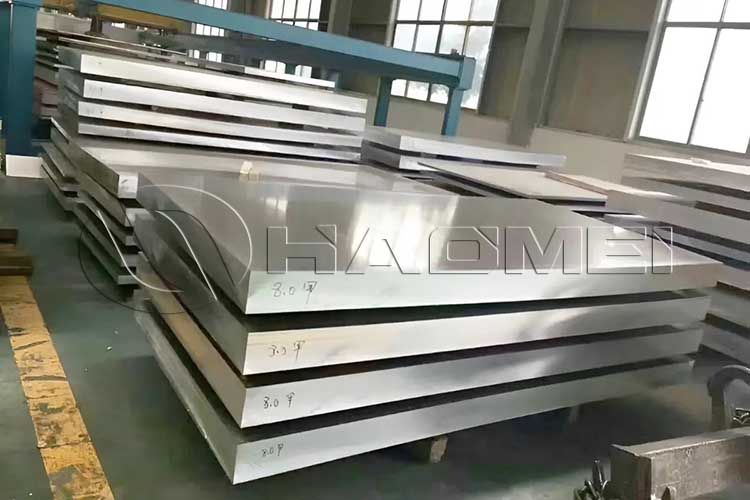
Among aluminum alloys, 7075 aluminum holds an irreplaceable position in aerospace, high-end equipment manufacturing, and other fields thanks to its outstanding comprehensive properties. Why has it become the material of choice for so many demanding applications? This is due to the exceptional aluminium 7075 material properties.

7075 aluminum belongs to the Al-Zn-Mg-Cu family of super-hard aluminum alloys. The core of its performance stems from its precise elemental composition. According to ASTM standards, the primary chemical composition (by mass) of 7075 aluminum is: zinc (Zn) 5.1%-6.1%, magnesium (Mg) 2.1%-2.9%, copper (Cu) 1.2%-2.0%, with the remainder being aluminum and trace impurities (such as chromium and manganese). These elements are not simply mixed together; rather, they interact synergistically to impart 7075 aluminum's unique properties.
Zinc is the most abundant alloying element in 7075 aluminum and is crucial for its strength. During heat treatment, zinc reacts with aluminum to form intermetallic compounds such as Zn₃Al₂. These compounds, in the form of fine particles, are evenly distributed throughout the aluminum matrix, significantly enhancing the material's hardness and tensile strength.
The addition of copper has two primary functions: First, it forms a ternary strengthening phase (Al₂CuZn) with aluminum and zinc, further enhancing the material's hardness and wear resistance, allowing 7075 aluminum to withstand greater friction in mechanical parts (such as gears and bushings); second, it improves heat resistance, allowing 7075 aluminum to maintain stable performance even at moderate temperatures of 120-150°C, a key factor in its use in aircraft engine nacelle components.
Based on the optimized chemical composition described above, 7075 aluminum achieves top-tier mechanical properties among aluminum alloys. This performance advantage is particularly pronounced after the T6 heat treatment (solution treatment + artificial aging).
7075-T6 boasts a tensile strength of 570 MPa and a yield strength of approximately 500 MPa. This significantly exceeds that of common aluminum alloys (e.g., 6061-T6, which has a tensile strength of approximately 310 MPa) and even approaches that of some mild steels (e.g., Q235 steel, which boasts a tensile strength of approximately 375 MPa). Crucially, 7075 aluminum has a density of only 2.81 g/cm³, less than one-third that of steel. This combination of high strength and low density significantly reduces structural weight.
7075-T6's Brinell hardness (HB) is approximately 150, significantly higher than 6061-T6's 95 HB. High hardness means it can withstand greater surface pressure and is less susceptible to deformation or wear. Therefore, 7075 aluminum is often used in the manufacture of precision mechanical parts, such as guide rails for CNC machine tools and pins for aviation connectors.
In dynamic load scenarios (such as aircraft takeoff and landing, and automotive shock absorbers), the material's fatigue performance is crucial. The fatigue strength of 7075 aluminum (10⁷ cycles) is approximately 160 MPa, and surface treatments such as anodizing and shot peening can further enhance its fatigue performance. This means it is resistant to fracture under long-term, repeated loads. For example, 7075 aluminum components used in helicopter rotors can withstand the vibration and shock of tens of thousands of takeoffs and landings, ensuring flight safety.
In addition to its mechanical properties, the physical properties of 7075 aluminum also provide important support for its applications.
Although 7075 aluminum possesses high strength, proper heat treatment (such as the T4 temper, solution treatment followed by natural aging) temporarily increases its plasticity, making it suitable for machining processes such as milling, drilling, and grinding.
Anodizing also allows it to form a dense oxide film (thickness exceeding 50μm), which not only improves wear and corrosion resistance but also allows for surface decorative effects such as dyeing and painting, meeting the aesthetic requirements of high-end products such as high-end sports equipment (such as bicycle frames and snowboard bindings). Welcome to inquire 7075 aluminum price from us directly.
Original Source:https://www.aircraftaluminium.com/a/what-are-aluminium-7075-material-properties.html
Tags: 7075 aluminum plate ,
Contact Us